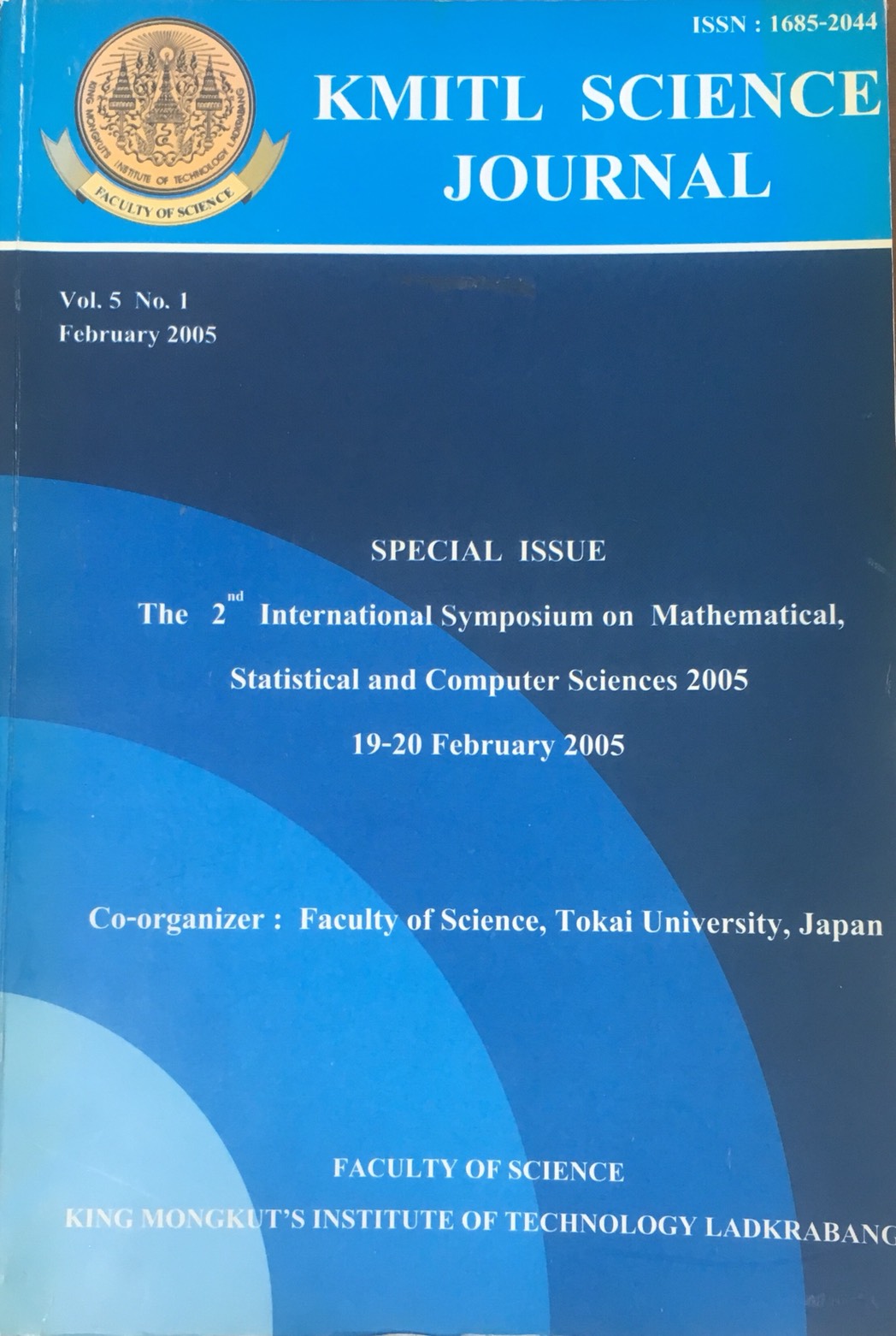Dynamic Programming Strategy for Dynamic Multiple Zone Expedition with Minimal Imbalance Scenario
Main Article Content
Abstract
In a conventional multiple zone expedition problem, traveling to support random over the road freight between adjacent areas leads to different levels of total cost or load-imbalance. The objectives of this research are to examine configurations of zone expedition alternatives for use in truckload trucking operations and to eliminate empty repositioning movements between loads to maintain the high level of equipment utilization. The conventional multiple zone expedition problems can be modeled as a Dynamic Multiple Zone Expedition problem (DMZE). In this problem, the rearrangement penalty will be added to the conventional model if there is a different of the area arrangement in each zone. An optimal procedure, Dynamic Programing Strategy (DPS), will be applied to this system. The combination of expedition alternatives with penalty over a series of discrete with the total minimal imbalance is chosen. DPS is practical merely for small problems. The results illustrate that minimising imbalance whilst controlling (minimising) runtime rely up-on the problem parameters, number of zone, are and consecutive time period, used.
Keywords: Dynamic Programming, Dynamic Multiple Zone Expedition and Imbalance
Corresponding author: E-mail: Ipongch@engr.tu.ac.th
Article Details
Copyright Transfer Statement
The copyright of this article is transferred to Current Applied Science and Technology journal with effect if and when the article is accepted for publication. The copyright transfer covers the exclusive right to reproduce and distribute the article, including reprints, translations, photographic reproductions, electronic form (offline, online) or any other reproductions of similar nature.
The author warrants that this contribution is original and that he/she has full power to make this grant. The author signs for and accepts responsibility for releasing this material on behalf of any and all co-authors.
Here is the link for download: Copyright transfer form.pdf
References
[2] Holl, R.W. and Sabnani, V.C. 2002. Control of Vehicle Dispatching on a Cyclic Route Serving Trucking Terminals, Transportation Research Part A, 36, 257-276.
[3] Taylor, G.D. and Meinert, T.S. 2000. Improving the Quality of Operation in Truckload Trucking, IIE Transaction, 32(6), 551-562.
[4] Taylor, G.D., Meinert, T.S., Killian, R.C. and Whicker, G.L. 1999. Development and Analysis of Alternative Dispatching Methods in Truckload Trucking, Transportation Research Part E, 35, 191-205.
[5] Taylor, G.D., Whicker, G.L. and Usher, J.S. 2001. Multi-zone Dispatching in Truckload Trucking, Transportation Research Part E, 37, 375-390.
[6] Hsu, H.M. and Wang, W.P. 2004. Dynamic Programming for Delayed Product Differentiation, European Journal of Operation Research, 156, 183-193.
[7] Plyter, G. 1966. The Optimal Assignment of Facilities to Location by Branch and Bound, Operation Research Journal, 14, 210-232.
[8] Luangpaiboon, P. 1996. Dynamic Process Layout Planning, Master Dissertation, Kasetsart University, Bangkok.
[9] Charnsethikul, P. and Blair, E.L. 1993. An Exact Procedure for the General Quadratic Assignment Problem, Kasetsart Engineering Journal, 18, 83-101.
[10] Rosenblatt, M.J. 1986. The Dynamics of Pant Layout, Management Science, 32, 76-86.
[11] Ceylan, H. and Bell, G.H. 2004. Traffic Signal Timing Optimization Based on Genetic Algorithm Approach, including Driver s Routing, Transportation Research, 38, 329 – 342.
[12] Marten, J. 2004. Two Genetic Algorithms to Solve A Layout Problem in the Fashion Industry, European Journal of Operational Research, 154, 304-322.
[13] Rego, C. and Roucairol, C. 1995. Using Tabu Search for Solving a Dynamic Multi-Terminal Truck Dispatching Problem, European Journal of Operation Research, 83, 411-429.


